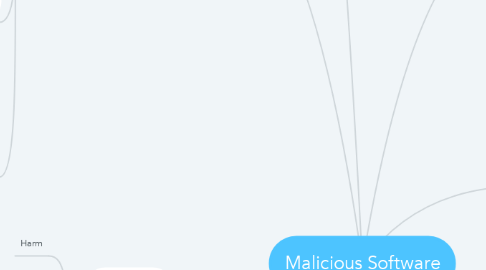
1. Classified Viruses
1.1. Appending
1.2. Surrounding
1.3. Integrating
1.4. Replacing
1.5. Hiding Mechanism
1.5.1. In the boot sector
1.5.2. In memory
1.5.2.1. Attached to resident programs
1.5.3. In application programs
1.5.3.1. MS Word
1.5.3.2. MS PowerPoint
1.5.3.3. MS Excel
1.5.4. In library files
1.5.4.1. .dll
1.5.4.2. .jar
1.5.5. In other widely shared files and programs
1.5.5.1. Data sets
1.5.5.2. Digital Photos
1.5.5.3. Inside virus protection programs
2. Anti-Malware Methods
2.1. Virus Detection
2.1.1. define signature by patterns
2.1.1.1. Storage Patterns
2.1.1.2. Execution Patterns
2.1.1.3. Distribution Patterns
2.1.2. Virus scanners
2.1.2.1. use file checksum to detect viruses
2.2. Virus removal and Post-infection Recovery
2.2.1. Use antivirus softwares to disinfect viruses
2.2.2. Recover/ Replace
2.2.2.1. files deleted by virus
2.2.2.2. files modified by virus
2.2.2.3. files deleted during disinfected
2.3. Identifying Digital Objects Modified by Malware
2.3.1. Error detecting codes can be used to detect when digital objects have been surreptitiously altered
2.3.2. Error correcting code can be used to restore programs or files to their proper state without requiring a coppy of the original object
2.4. Proper Malware Hygiene
2.4.1. Use up-to-date anti malware
2.4.2. Test new software on an isolated device
2.4.3. Open only safe attachments and data files
2.4.4. Recognize that any website might be hamful
2.4.5. Keep a recoverable system image in a safe place
2.4.6. Backup executable system
2.5. Several mechanisms can be used to reduce from malware
2.5.1. Least privilege
2.5.2. Complete mediation
2.5.3. Memory separation
3. Attributes
3.1. Harm
3.2. Transmission / Propagation
3.3. Activation
3.4. Stealth
4. Common Forms
4.1. Virus
4.1.1. transient virus
4.1.2. resident virus

